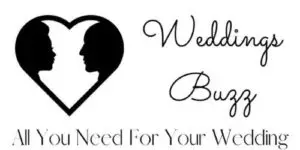Table of Contents
When it comes to shopping for diamonds, it can be fun, but it can also easily become overwhelming. If a shopper is looking for something that simply speaks to them, and not worrying about all the nitty-gritty details, then there isn’t much to worry about. However, for those who want to be more involved in the shopping experience, diamond charts and infographics are a great way to simplify all the information that a shopper needs to know.
*This post may contain affiliate links. As an Amazon Associate we earn from qualifying purchases.
It doesn’t matter if a buyer is looking for a diamond for themselves or if they are buying it for a significant event, such as an engagement or a wedding band. Diamond charts can help present information to consumers in a friendlier way instead of just throwing facts and statistics at them.
What You Need To Know When Buying A Diamond
Jeweler stores are intimidating places to be, so having some sales clerk throw facts and figures at a shopper can make them seem rather cold. By presenting a shopper with a simple to read infographic or diamond chart can help lessen the pressure brought on by even being in a shop with such expensive merchandise.
Maybe you are shopping online instead of in a brick and mortar store? The options aren’t any less overwhelming. So, having some information readily at your fingertips can really help ease any shopping anxiety.
So, before presenting some of the top diamond charts and infographics, let’s talk about some important facts that a shopper will need to know when purchasing a diamond for either themselves or a loved one.
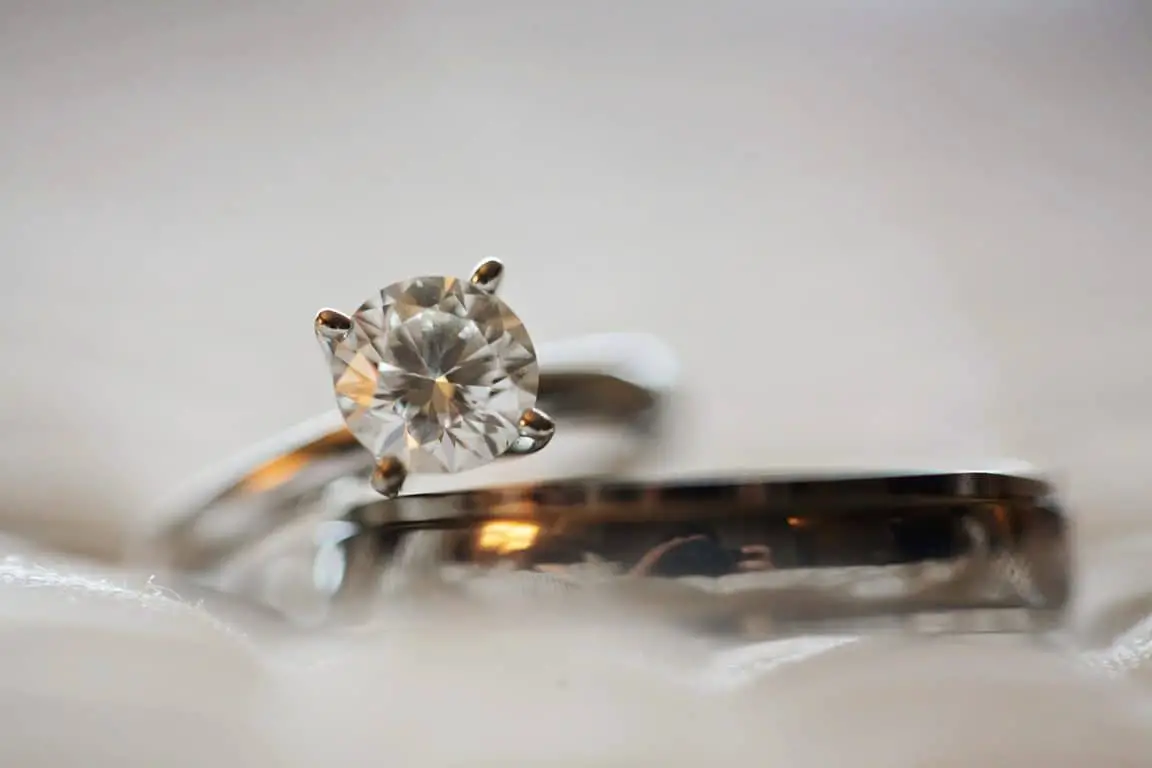
Welcome to Diamond 101 – The Four C’s.
Diamond Cut
The cut of a diamond refers to a finished stone’s proportion, polish, and symmetry. During the cutting process, artisans will sculpt tiny facets into a raw stone. This helps to create the overall shape. Common diamond cuts include:
- arrow-right
- arrow-right
Diamond Clarity
Diamond clarity is the measure of not only the purity but also the rarity of the stone. It is graded by the visibility of certain characteristics while under magnification. While being graded, a jeweler will look for both internal flaws, known as inclusions and surface flaws, known as blemishes.
Each diamond is given a clarity grade from the Gemological Institute of America (GIA) 11-step scale:
- arrow-right
- arrow-right
Diamond Color
Despite what many shoppers believe, the color of the diamond doesn’t refer to colored stones such as chocolate diamonds, black diamonds and so on. In nature, diamonds generally have a tint of either yellow or brown coloring in them. The clearer the diamond, meaning the less color tint that is present, is labeled either colorless or near colorless, and these stones are generally considered rarer.
The color grading system for diamonds goes as follows:
- arrow-right
Diamond Carat
The term carat refers to the diamond’s overall weight, not the actual size of the diamond. One carat equals .20 grams.
While a diamond’s carat is taken into consideration when it is price, the weight does not determine the overall value. The color, clarity, and cut all are taken into consideration.
Top 8 Diamond Charts & Infographics to Help Buyers
Okay, now we know the basics needed to understand when it comes to shopping for a diamond, but we can’t always have that information readily available at all times. Moreover, words on a sheet of paper sometimes just happen to be more confusing than being chatted up by a salesperson.
That’s were charts and infographics come in super handy. Simple charts are great for the bare basics, but sometimes readers want a little something more, and that is where fun infographics come into play.
Infographics are ways to present facts and other information in an easy to understand manner, often with a simple flow. Ever notice how infographics tend to belong images instead of a more traditional square image? There is a reason for that. Start at the top and make your way down. Easy as that.
Below, we have compiled a list of some of our favorite diamond charts and infographics to not only help shoppers but to also give a little bit of history behind the rock in question and some other fun facts.
1. Engagement Ring Guide
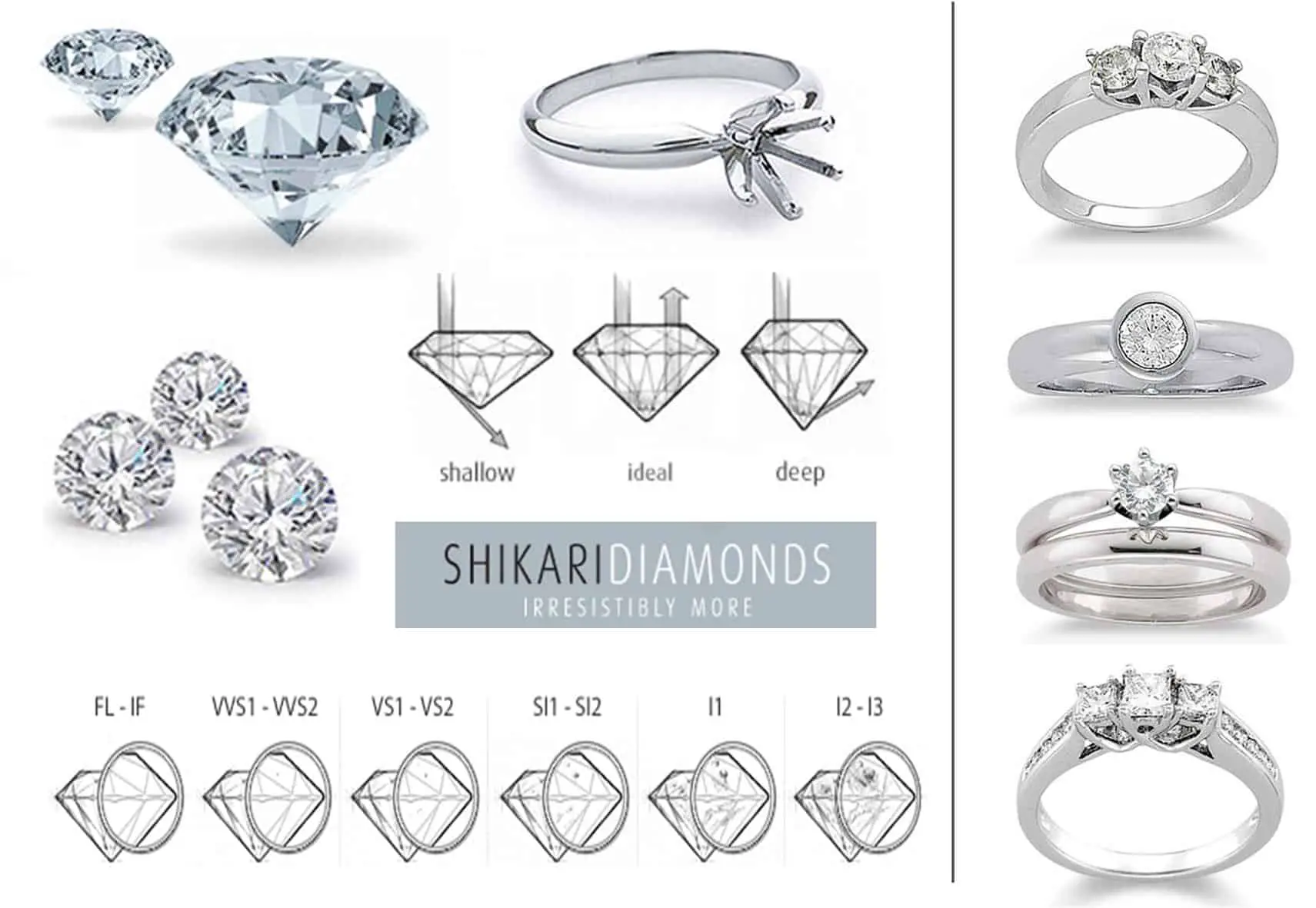
Image from onewhitedress.net
The Engagement Ring Guide infographic is the ideal one-stop-shop for those out looking for that special ring for their special someone. It covers not only the 4C’s but also bands, settings, protecting your purchase… Everything! This is the ideal starting place for those looking to make this purchase.
2. The Gentleman’s Guide to Buying an Engagement Ring
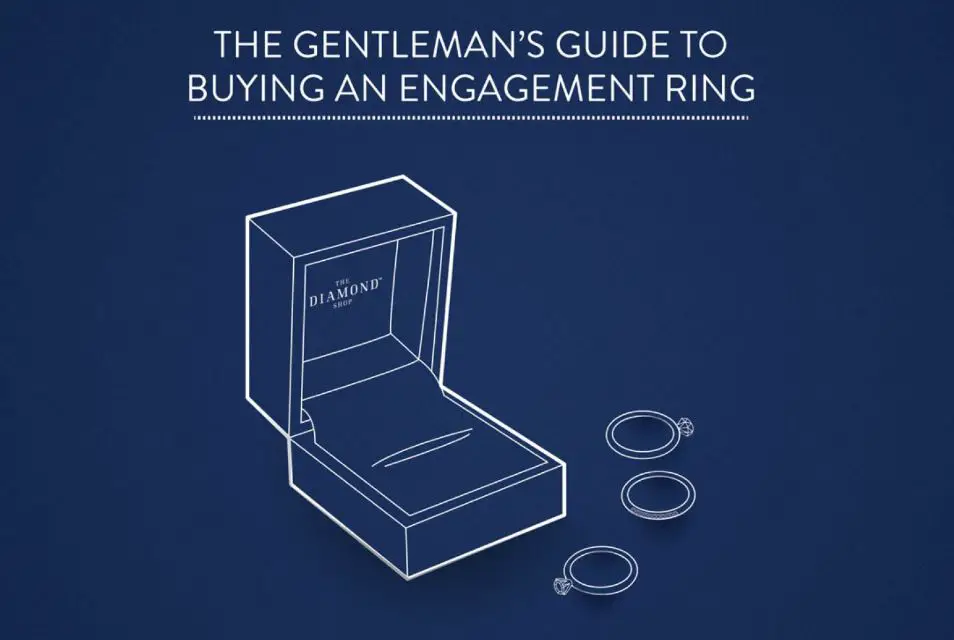
Image from Visual.ly
Let’s face it guys; sometimes the most basic information is the best. Not only does it help in processing, but it also helps get the job done quicker and simpler. This is an ideal infographic on picking not only a diamond but picking out the entire engagement ring from start to finish. From how much to spend, to the diamond cut and the 4C’s, this diamond chart has everything a buyer will want to know laid out most simplistically.
3. Anatomy of a Diamond
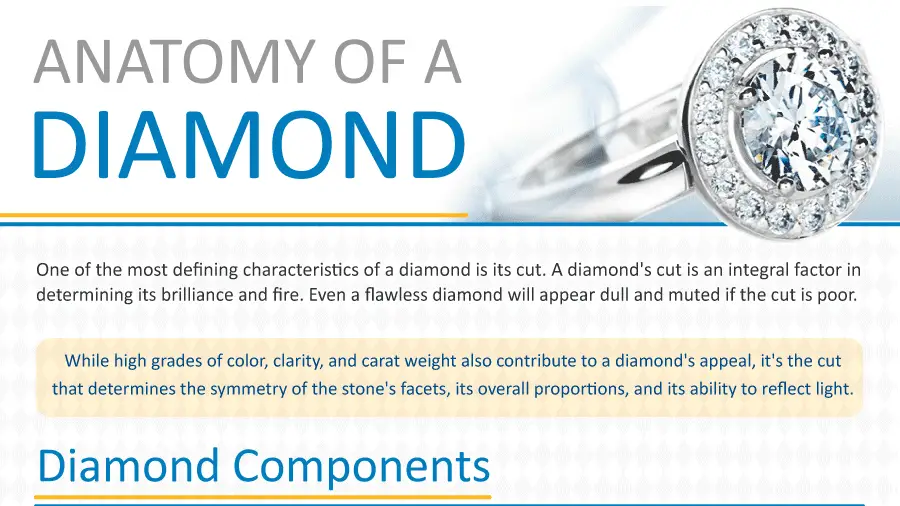
Image from Brilliance.com
Knowing the anatomy of a diamond can be useful when shopping for the ideal diamond for a treasured piece of jewelry. This infographic does a great job of not only talking about the anatomy of the stone but also how it all factors into the overall appearance and value of the stone.
4. Understanding the 4C’s of Diamonds
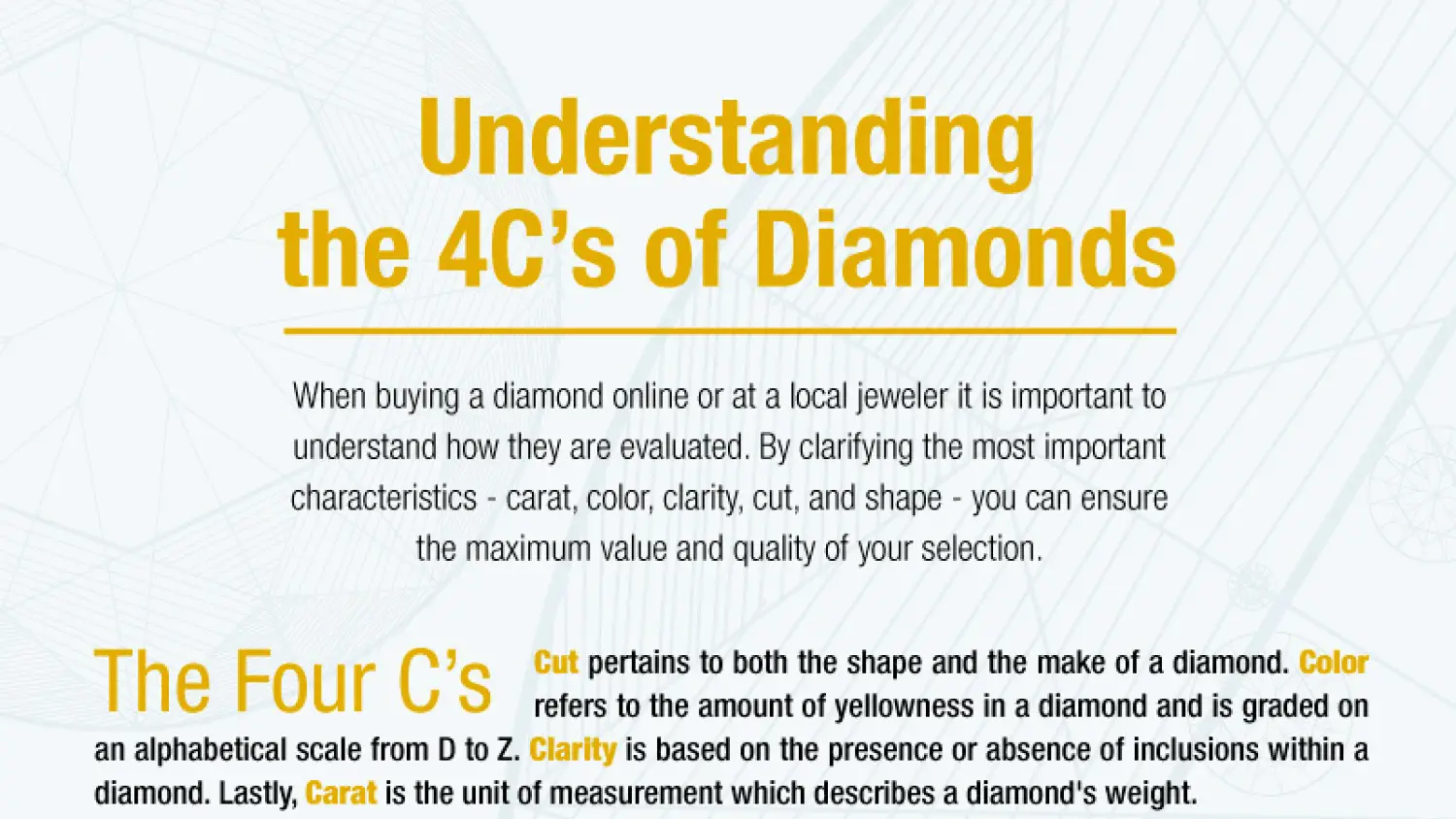
Image from Visual.ly
The 4C’s of diamond are essential to know when buying a stone of this value. This infographic does a brilliant job of breaking down the information on the color, clarity, cut and carat of diamonds and how they are used in evaluating a diamond. Shoot, it even does a quick and simple job of explaining the different shapes available.
5. Diamonds for a New Generation
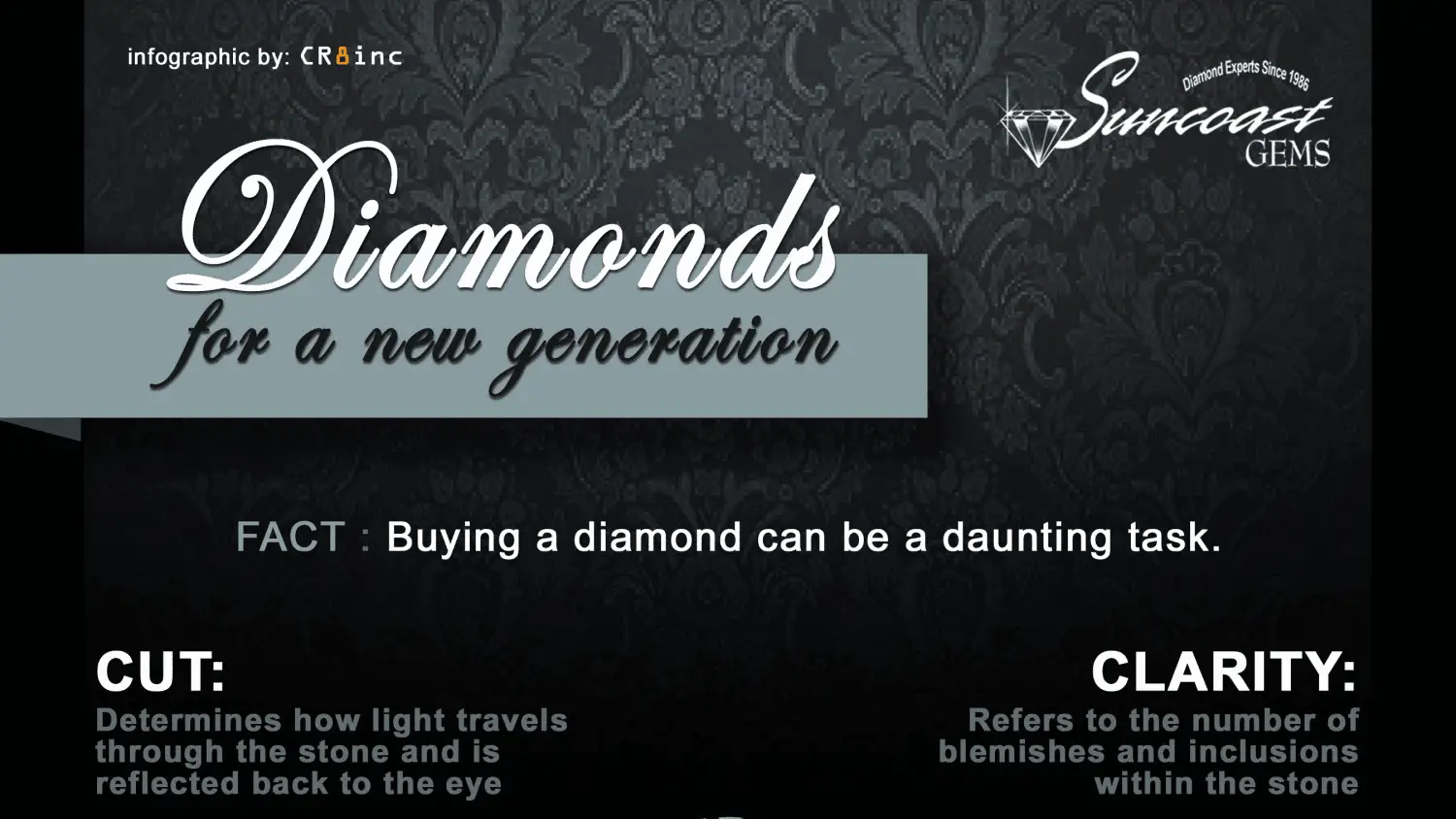
Image from Visual.ly
This diamond infographic does an amazing job of presenting the basics in a quick and easy to understand manner. Sometimes the simplest of diamond charts are the best because they allow readers to digest the facts quickly.
6. A Clear Look at Diamonds

Image from mining.com
Now this infographic was really cool considering it presented not only the traditional facts of diamonds but also some of the history and properties of the stone. Not only did it talk about how these stones are formed, but also the mining process and then the current Dimond market. Sure, it may be less of a buyer’s guide, but it can be neat to know these background details.
7. How Much Should You Spend on An Engagement Ring?
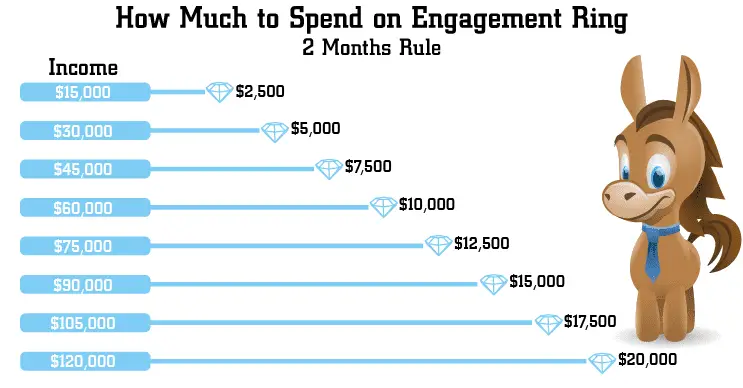
Image from creditdonkey
This is an age-old question when buying an engagement ring, how much should a buyer spend? Is it two months of the proposer’s salary? Alternatively, is it based on the buyer’s current economic situation?
Honestly, there is no right answer, and frankly, most women won’t care how much you actually spend, because when it comes to engagement rings, it’s the meaning behind the Dimond, not the actual price. This infographic does an outstanding job of breaking down the different factors to consider when deciding how much a buyer should spend on such a special piece of jewelry.
8. What Your Engagement Ring Says About You
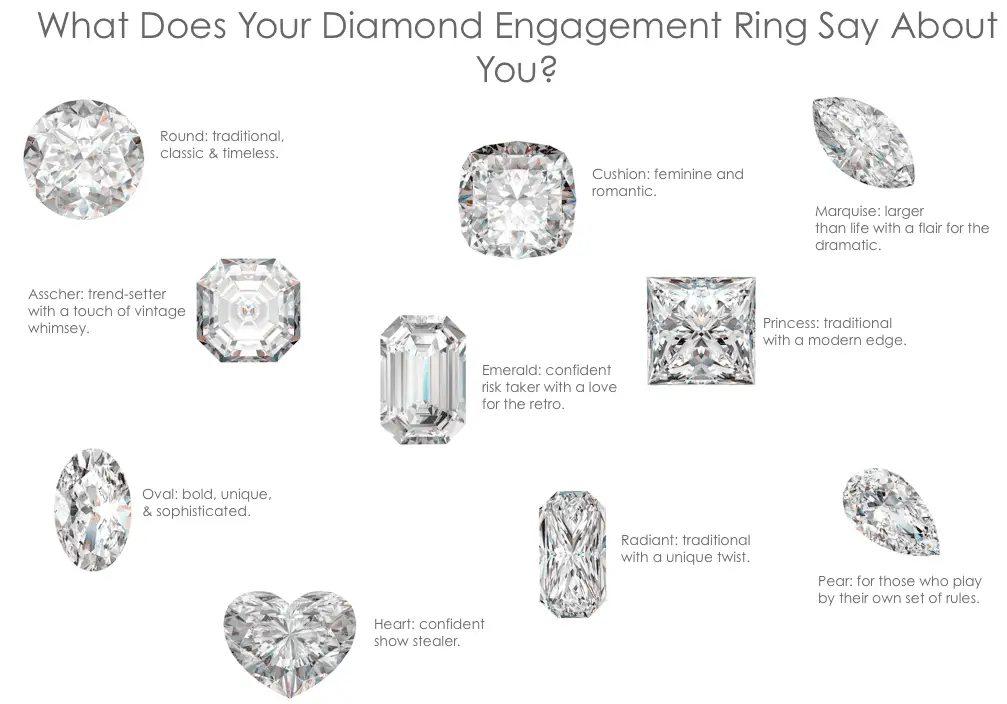
Image from pinterest
We really enjoyed this infographic because it broke down what type of diamond cut represents certain types of women and their personalities. Of course, this is no definitive guide to women and their taste, but it can really help a gentleman who may be out shopping for that perfect diamond for an engagement ring.
A Diamond Chart and Infographics Make Shopping Simple
Shopping for diamonds either for wedding accessories or an engagement band are stressful situations, there is no doubt about that. Heck, even shopping for a diamond necklace can be stressful as diamonds are pricey stones and putting that kind of money down can be intimidating to anyone.
By properly informing yourself before you head out into the world (or to the web) in search of an ideal diamond, shoppers can lessen that stress considerably. The perfect way to do this is by looking at diamond charts and infographics because they present the most important information in an easy to understand fashion.
Remember, take a deep breath, do your research and your shopping experience should go off without a hitch!
